Hepatica americana round lobed hepatica, is a native herbaceous perennial plant that has leaves that persists over winter. It is a low growing plant in the woodlands that blooms in early spring. It has delightful delicate flowers with enticing pastel colors to deeper shades of pink and blue and also sparkling white.
The scientific name for the round lobed hepatica has gone through many changes. Some of the other names are listed here: Hepatica triloba var. americana, Anemone americana, Anemone hepatica. For more complication, it also has another common name - round liverleaf.
Flowers
Each Hepatica americana, flower forms on the top of an upright slender, unbranched, hairy, leafless stalk that is about 3 inches tall. The flowers are about a half to an inch wide.
The showy light blue to lavender to pink to white parts of the flower are not petals; they are sepals. The number of sepals is variable, about 6-10 but usually 6. There are no petals. There is a cluster of free carpels/pistils (see below) and about 10-30 stamens. These stamens have white or light yellow anthers. The ovary is green with a white stigma on top with no style.
Behind the showy sepals are 3 large hairy bracts.
To conserve pollen and synchronize open flowers with pollinator activity, these flowers may not fully open on a rainy day. The younger flowers close at night or on cloudy days but the older flowers may remain open. The flowers do not have nectar. The plant rewards early pollinators, solitary bees and flies, with its pollen. The flowers can easily to seen by pollinators and people against the brown leaf litter of the forest floor. With few insects early in the spring cross pollination may fail. Then flowers will self-pollinate to assure survival. The flowers are protogynous (pistils matures before the stamens) which promotes cross-pollination.
Like some other spring plants, the seeds/achenes have appendages called elaiosomes that are rich in fats. Ants carry the seeds with the elaiosomes back to their nests, eat the elaiosomes, and discard the seeds in their trash area where the seeds can germinate. This is called myrmecochory.
Below: Showy blue and pink flowers with white edges on the sepals

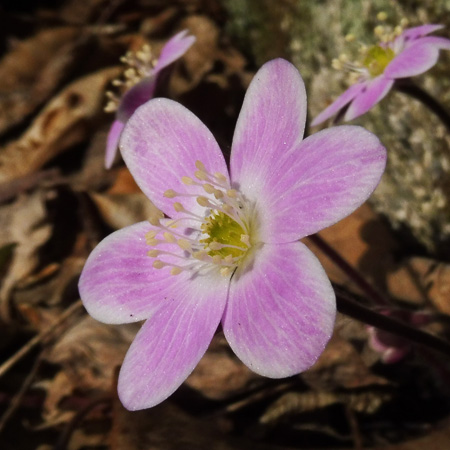
Hairy bracts
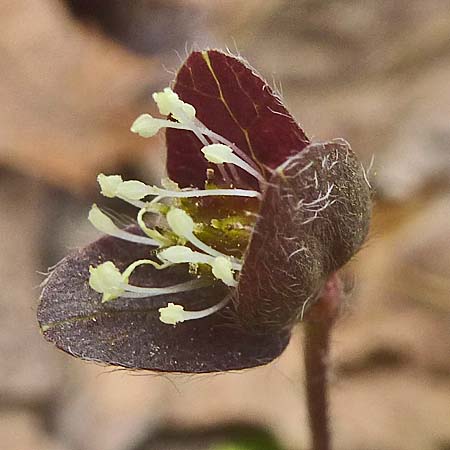
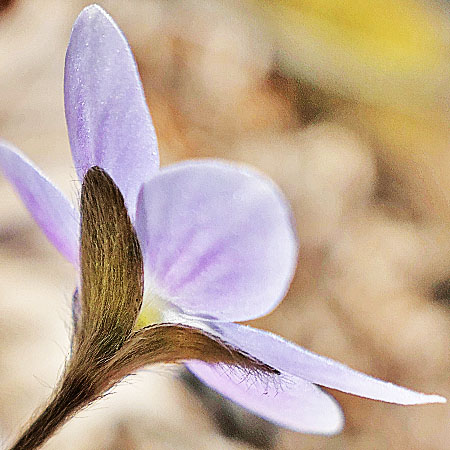
Close-ups of stamens and carpels/pistils: Immature flowers to more mature flowers:
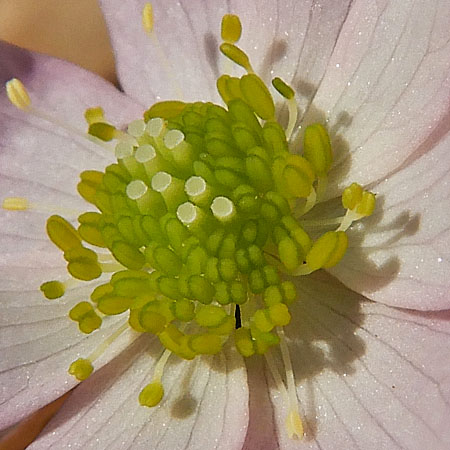
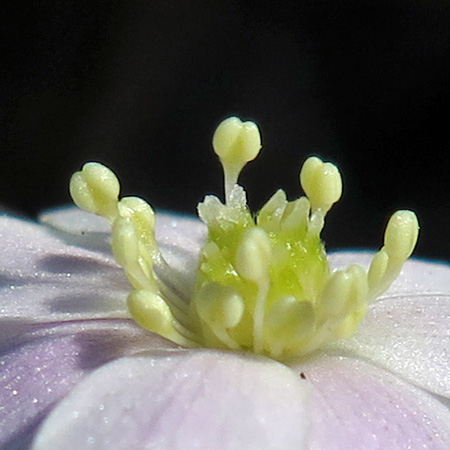
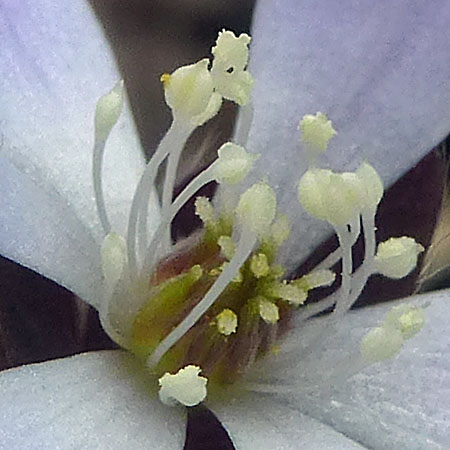
This white flower with 8 sepals instead of the usual 6.


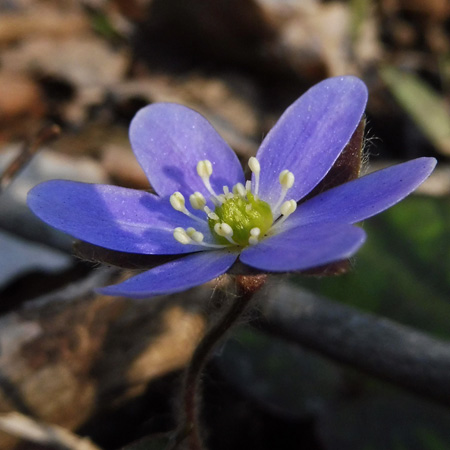
Leaves
Round lobed hepatica is not a spring ephemeral. The round lobed hepatica leaves overwinter. The leaves have a distinctive shape with 3 lobes and are thick and leathery and form a basal rosette. Note that the lobe tips are rounded. They are maroonish green after the winter and are a bit weather beaten by the time the flowers bloom. The new leaves emerge after flowering and are light green. The leaves are a few inches long and wide. Having evergreen leaves maximizes the time this forest floor dwelling plant has to photosynthesize and store up energy for its next early flowering season. With very variable weather in the early spring, this is another aid to survival.
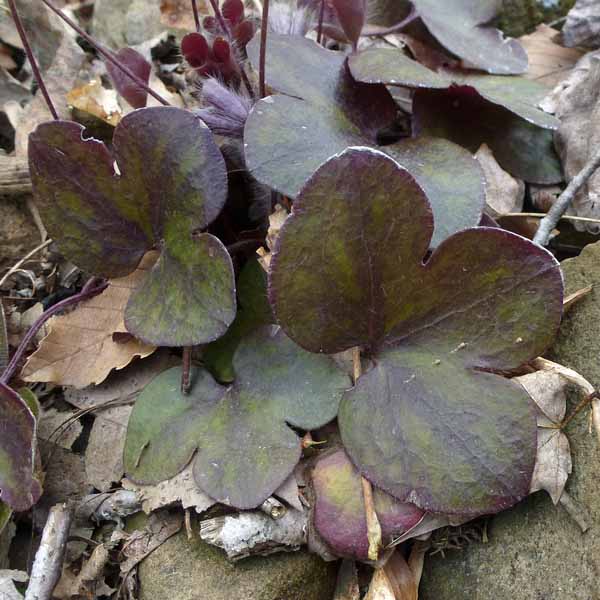

Plant & Habitat
The round lobed hepatica plant is 2 to 12 inches tall. It has horizontal underground rhizomes. The leaves and flower stems grow from these rhizomes.
Habitats: Its habitats consist of rich, dry to moist woods. It prefers acidic soil. It gets dappled sunlight during the spring and light shade during the summer.
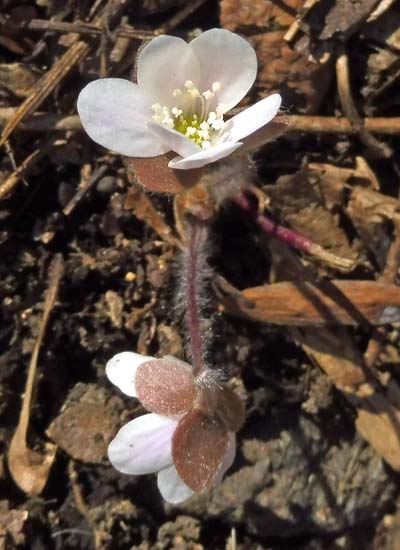
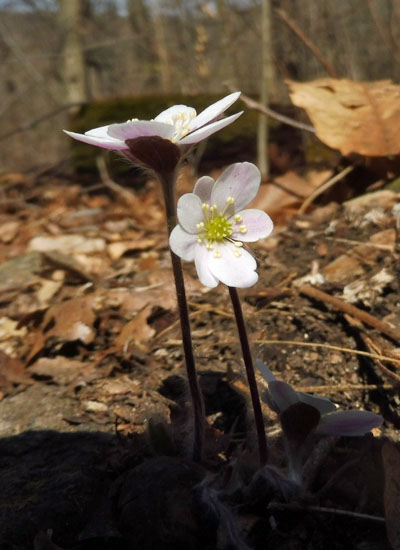


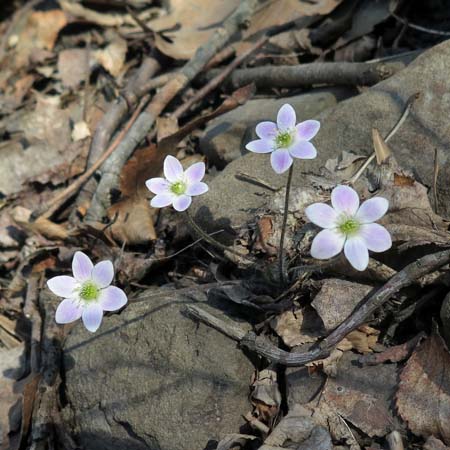
Similar to round lobed hepatica is sharp lobed hepatica (Hepatica nobilis var. acuta). Sharp lobed hepatica is not native to NJ but is native to states surrounding NJ. They differ in the tips of the leaf lobes. Sharp lobed hepatica has leaf lobes that are sharp. Also, sharp lobed hepatica prefers more basic soils.
Text by Millie Ling and all photos by Hubert & Millie Ling. Photos: Flowers April 6, 14, 29 various years. Washington Valley Park, Somerset County; Musconetcong Gorge Preserve & Cushetunk Mountain Preserve, Hunterdon County.
Additional information and References
Additional information / References:
-
Pistils & Carpels: A carpel is the basic unit of the female reproductive system and consists of a ovary, style and stigma. A pistil can contain one carpel. Or the pistil may contain more than one carpel and the carpels are partly fused together. For example the ovaries may be fused but the styles and stigmas are separate.
In the case of round lobed hepatica, all the carpels are separate - termed free carpels. https://en.wikipedia.org/wiki/Gynoecium - The USDA site gives all the scientific names as well as the distribution and other information: http://plants.usda.gov/core/profile?symbol=HENOO
- Gordon Mitchell’s Plant Profiles, Indiananativeplants.org: https://indiananativeplants.org/wp-content/uploads/GW_Hepatica.doc
- The Natural Web, Hepatica’s Survival Strategy: https://the-natural-web.org/2017/04/17/hepaticas-survival-strategy/
- Autogamy and Competition for Pollinators in Hepatica americana: https://www.jstor.org/stable/2442754